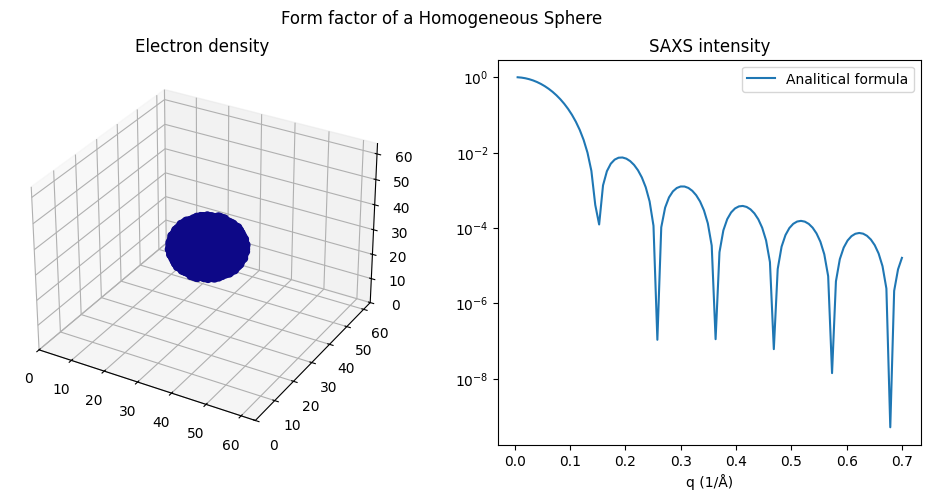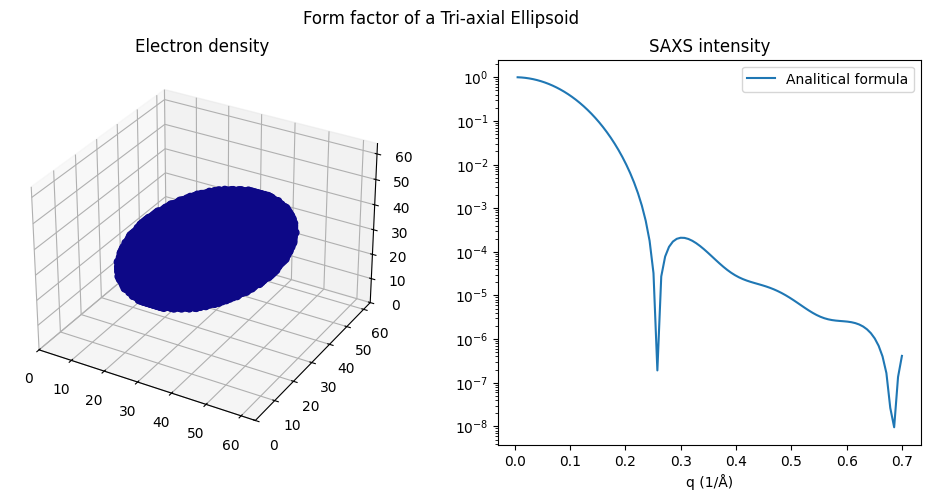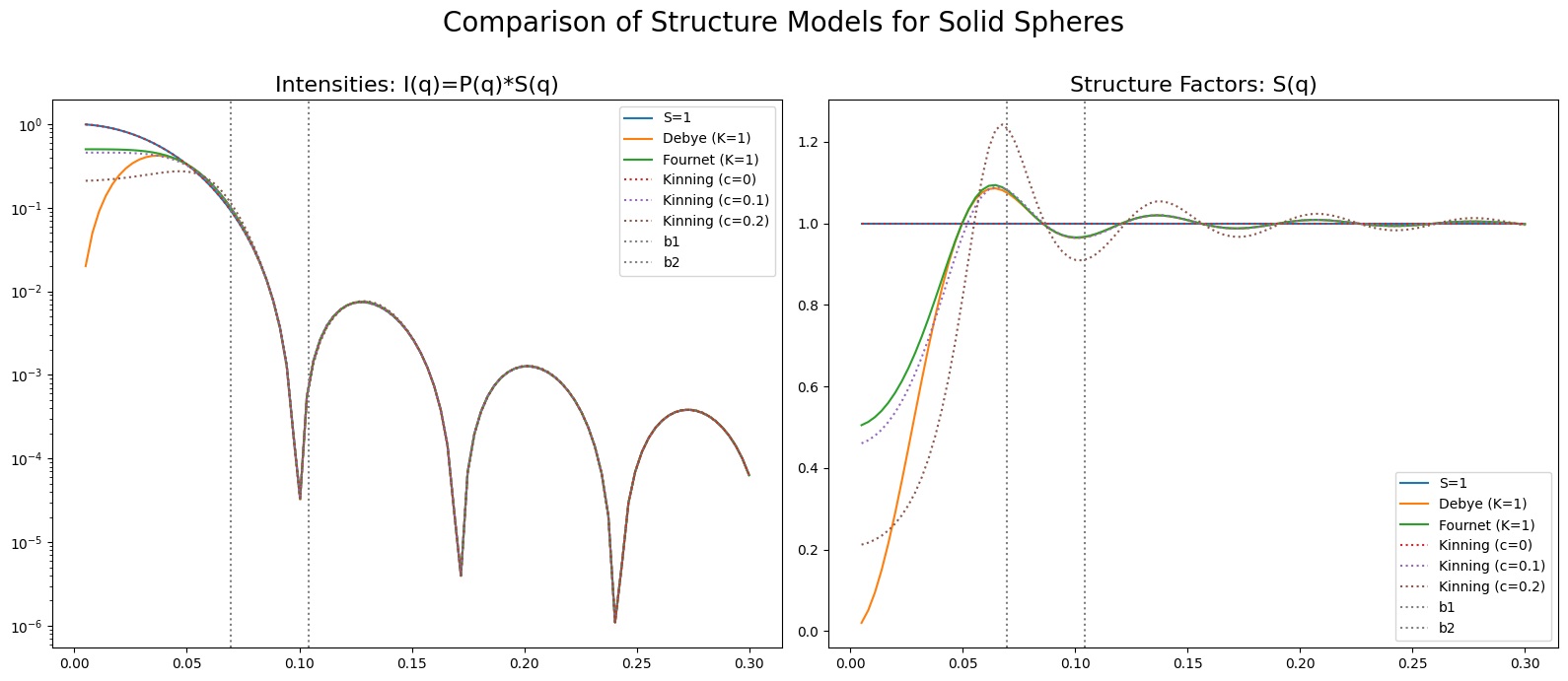6.3. Form and Structure Factors#
6.3.1. General Note#
Note
This section is planned.
References:
6.3.2. Definition for SEC-SAXS Solution Context#
For the discussion in the following chapters, the definitions of form factor and structure factor are presented here. According to [GJF21], these two factors are pedagogically distinguished as follows:
form factor — scattering by individual particles
structure factor — scattering by collections of particles
In simple terms, we can understand them pragmatically as:
\( I(q) \sim P(q) \) when interpaticle effects are ignored (i.e., \(S(q)=1\) in this case)
\( I(q) \sim P(q)S(q) \) when interpaticle effects are considered.
6.3.3. Form Factor#
For an individual particle, the form factor is defined as
where
\(I(q)\) : scattered intensity
\(\rho\) : electron density
\(V\) : particle volume
\(P(q)\) : form factor (normalized so that P(q) = 1 for small q).
For a sample, ignoring interparticle effects, it can be written as
where
\(c\) : particle concentration.
6.3.4. Structure Factor#
When you consider the interparticle effects, they are expressed as
where
\(S(q)\) : structure factor.
In other words, we can just think that the structure factor is a reprentaion of interparticle effects.
6.3.5. Form Factor Models#
Following [Ped97], we will give some known examples of form factor models.
Homogeneous Sphere#
from molass import get_version
assert get_version() >= '0.5.0', "This tutorial requires molass version 0.5.0 or higher."
import numpy as np
import matplotlib.pyplot as plt
from molass.Shapes import Sphere
from molass.DensitySpace import VoxelSpace
from molass.SAXS.Models.Formfactors import homogeneous_sphere
q = np.linspace(0.005, 0.7, 100)
R = 30
I = homogeneous_sphere(q, R)
sphere = Sphere(radius=10)
space = VoxelSpace(64, sphere)
fig = plt.figure(figsize=(12, 5))
fig.suptitle('Form factor of a Homogeneous Sphere')
ax1 = fig.add_subplot(121, projection='3d')
ax1.set_title('Electron density')
space.plot_as_dots(ax1)
ax2 = fig.add_subplot(122)
ax2.set_title('SAXS intensity')
ax2.set_yscale('log')
ax2.plot(q, I, label='Analitical formula')
ax2.legend()
ax2.set_xlabel('q (1/Å)')
Text(0.5, 0, 'q (1/Å)')

Tri-axial Ellipsoid#
from molass.Shapes import Ellipsoid
from molass.DensitySpace import VoxelSpace
from molass.SAXS.Models.Formfactors import tri_axial_ellipsoid
I = tri_axial_ellipsoid(q, 30, 20, 10)
ellipsoid = Ellipsoid(30, 20, 10)
space = VoxelSpace(64, ellipsoid)
fig = plt.figure(figsize=(12, 5))
fig.suptitle('Form factor of a Tri-axial Ellipsoid')
ax1 = fig.add_subplot(121, projection='3d')
ax1.set_title('Electron density')
space.plot_as_dots(ax1)
ax2 = fig.add_subplot(122)
ax2.set_title('SAXS intensity')
ax2.set_yscale('log')
ax2.plot(q, I, label='Analitical formula')
ax2.legend()
ax2.set_xlabel('q (1/Å)')
Text(0.5, 0, 'q (1/Å)')

6.3.6. Structure Factor Models#
Following [KT84], we will give some known examples of structure factor models.
from molass import get_version
assert get_version() >= '0.5.0', "This tutorial requires molass version 0.5.0 or higher."
from molass.SAXS.Theory.DjKinning1984 import demo1
demo1()

